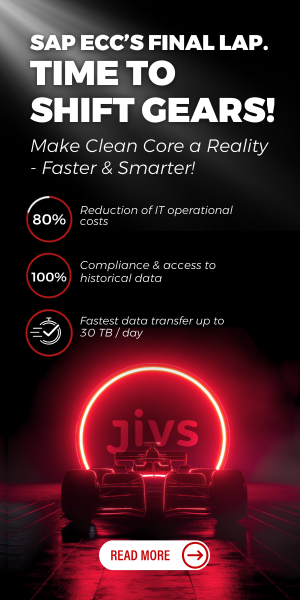Over the past 20 years, we have moved from country-centric economies to a global economy in a relatively short space of time with the explosion of the digital age.
The arrival of digital shopping experiences and social media commerce has not only changed how we buy but it has also fundamentally changed how we run businesses.
Today, transactions happen at the click of a button and often at very high volumes. A business’ customer base can be spread far and wide, and shoppers can purchase goods and services online from sellers all over the world. IT infrastructure, financial reporting and the management of changing indirect tax legislation, to name a few business operations, have seen a transformative effect as a result..
In the past, financial teams were mostly focused on country-specific reporting or at most, small regional reporting areas. Financial reporting was relatively straightforward; reports were compiled for the country/region, and tax reports could then be reviewed and monitored for errors in calculations, in advance of submitting them to tax authorities. Fast forward to 2023, many transactions are happening cross-border, and the move towards destination-based tax rules, is pushing businesses towards real-time indirect tax calculation with the application of rules and rates at the point of sale.
What’s more, the regulatory landscape is also becoming increasingly digital, with a major shift towards (near) real-time reporting and e-invoicing, with many EU countries exploring digital mandates to take the finance and tax worlds by storm.
The Journey to Centralized Systems
The scope of IT systems has had to change to accommodate our global and digital world. In the past ERP systems were implemented at the country or regional level and the reality was that a multi-national business could have over 200 ERP systems implemented globally e.g. one for the Nordics, another for the UK, and so on.
As a result, financial systems were often very decentralized. As the world moved toward global supply chains, CFOs faced challenges getting centralized insights with these decentralized systems. And automating indirect tax processes or implementing a tax engine was also not a viable strategy. It was clear that there was a need to extend the scope of ERP systems to a global scope to support globalization of supply chains and enhance visibility and controls for finance and tax. Siloed systems – each with separate data streams – were no longer practical for tax teams or CFOs, who need a single source of truth for reporting and when assessing their business’s global financial and tax position at any given time.
Today, many businesses have adopted a global ERP system facilitating an integrated supply chain and allowing them to consolidate their global data. The fewer ERP systems a business has the greater the opportunity to standardize business processes and data, automate indirect tax calculations, improve data accuracy, harmonize tax and financial reporting and more.
In Vertex’s latest report, insights were gathered from 580 individuals with an influence on indirect tax decisions within their organization. Almost half (47 percent) of these tax decision-makers said they have centralized controls in place for their tax compliance operations, and over a third (34 percent) said these changes to software systems, such as ERP systems, are driving their tax compliance strategy. Furthermore, when asked what an indirect tax compliance strategy needs most to alleviate current challenges, one in five (22 percent) said specialist tax technology.
Centralized systems and the evolution of tax management
The shift toward centralized financial systems has been a learning curve for businesses.
Firstly, businesses gained true insights into the position of their data, and in many cases, it wasn’t a pretty sight. The systems consolidation highlighted the number of errors and issues with data quality that were never visible in a decentralized financial framework. The move toward centralizing data also paved the way for centralized master data management and greater compliance, with tax teams now looking toward tax technology to help drive efficiencies and improve tax compliance.
The role of tax technology nowadays is undeniable. It has pushed the meeting of minds between the worlds of finance, tax and IT to solve the growing needs of tax teams to meet the ever-changing legislative tax and compliance landscape and future-proof their businesses.
Secondly, many businesses assumed that tax and IT teams would collaborate well on this new systems-led approach to tax management. However, these departments come from different backgrounds and effectively speak different languages which made this collaboration challenging. The different perspectives created a lack of joined-up thinking and made it difficult for either side to work harmoniously together and understand each other’s unique challenges.
The influence tax technology and centralized systems have had on traditional tax roles has been significant. Working in tax today requires as much of an understanding of the world of finance, as it does the world of IT and technology. For IT teams, implementing tax technology requires a certain level of understanding of tax as well as technical IT skills. To keep pace with this, a new set of skills in a new role is emerging within tax departments – that of the tax technologist.
Arrival of the tax technologist
Tax technologists have become a crucial bridge between the tax and tech sides of the business. This role has taken one of two forms: 1) a tax team member upskilling and learning new digital skills or 2) a member of the IT team upskilling to learn and harness tax rules and processes. In essence, the tax technologist becomes a conduit between the Tax and IT worlds to drive the collaboration needed for the business to succeed.
Tax technologists today are tasked with the responsibilities of ensuring compliance and optimizing the efficiency of tax processes through automation. In addition, they are often involved in larger, more complex projects, such as integrating the data and systems of acquired companies and working with IT to improve tax and ERP system integration. So, unsurprisingly, with their finger on the pulse of what’s happening in the world of tax compliance, and what tech will be needed to succeed, tax technologists are typically centre stage when it comes to decision-making during the tax solution adoption process.
Of course, they also face a myriad of challenges, too, such as navigating new markets, facilitating cloud migration and ensuring tax platforms and systems are used to uphold a high standard of data privacy and security. As a result, it is becoming increasingly important for businesses to provide more digital skills training to make way for this new wave of required tax talent. So much so that the majority (78 percent) of Vertex’s research respondents said that internal skills and talent is the most important factor to successfully achieving indirect tax compliance today, and over a third (36 percent) said this was currently the biggest gap in their strategy.
Tax technologists are establishing themselves as an essential cog in the global business machine, ensuring the right tech is in place to lead businesses towards efficient compliance and healthy, sustainable growth.






